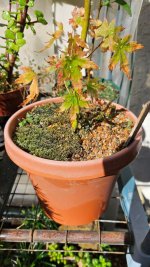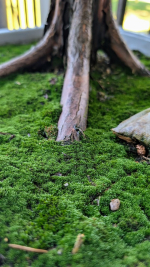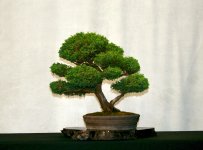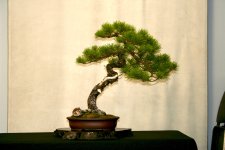Deep Sea Diver
Imperial Masterpiece
Certainly seems a conducive environment for mosses. Maybe try something with a bit more texture? Perhaps mix in some Yamagoke?Those are some gorgeous mosses. Enviable, even. It rains about 9months a year here and even on the tiles it doesn't grow as lush as in your pics. I've tried many methods of transplanting and various different types from different areas in the garden and still haven't cracked it yet.
Alternatively the water quality may be lacking. One would want water on the acidic side. Might try to toss in 1 gram of citric acid to 3.78 L of tap water to lower the pH one unit. (Approximately)
I have seen sedums used as ground cover too, but they still have roots which might interfere with the plant's, unless you use them on a fairly large bonsai I guess. I only have small trees so I don't use it as ground cover but do keep a small patch in my bougainvillea's pot, I think they match nicely, and some in accent pots
It depends upon the succulent whether or not the roots will grow deeply. Most of the miniatures will not go very deep at all, considering the repotting cycle of most bonsai. (Sorry for the ill kept bonsai late season images)

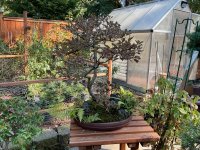

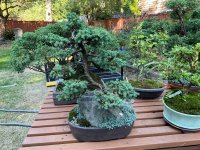
Harkening back to ecology training, couldn’t one propose the presence of these shallow rooted plants might actually be beneficial for the bonsai? Ours are certainly visibly much more healthy and robust then in the years without.
Maybe “not having other species is bad for health (and growth)” in a containerized environment is a myth? (under the constraints mentioned previously… shallow rooted species.) We certainly think so…..
Cheers
DSD sends

